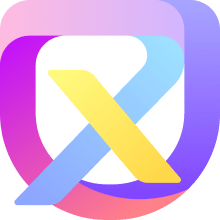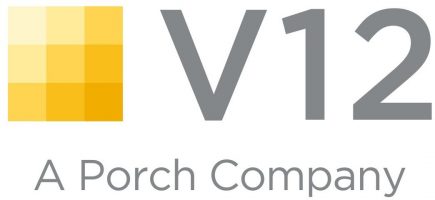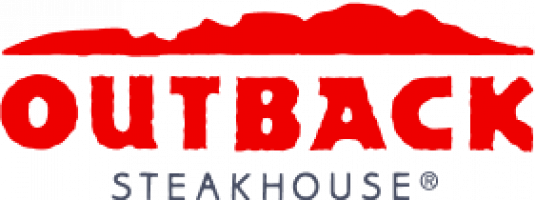Real Talk: Why Are Some Super-Useful App Features Mysteriously Absent?
Hello there, fellow web explorers! Have you ever been on a website and thought, “Why on earth doesn’t this have a simple filter or sorting button?”.
Take the popular job board that rhymes with ‘SyncedIn’ as an example. Have you noticed how you can only filter posts or jobs once you’ve searched first? It’s annoying, right? But here’s the catch: this isn’t just a design oversight. It’s a clever trick to keep you clicking, searching, and, most importantly, staying on the site longer – hello, ad revenue!
I’m a User Experience Strategist at Discover and work closely with Craftworx, our methodology for establishing gold standard practices essential for crafting successful products. CraftWorx is a repository of good habits, processes, tasks, and deliverables specially crafted by Discover for Discover. It covers topics and emphasizes digital capabilities such as reliability, scalability, risk management, and, most importantly, user experience. I’m here to demystify a common question in digital product design: Why don’t some applications immediately implement features that could be game-changers for the user experience?
I will put you at ease; you are not crazy, nor is it your overly strategic natural proclivity for well-thought-out experiences. There is a reason why apps may not include features that should be no-brainers.
So let’s talk about it.
We all agree it’s about more than just the features they don’t add. It’s also about the navigation maze they create, making us take the scenic route through their site, bumping into more ads and sponsored content along the way. Don’t get me wrong, we are bashing these companies – we get it; they need to make money somehow. However, by understanding the ‘whys’ behind these UX choices, we can navigate sites more smartly and maybe, just maybe, start a conversation about finding that sweet spot where user convenience and company profit can coexist.
We all have that ugh moment on sites like Figma when most of us express a profound need for features such as variable data, which allows the importation of dynamically changing data, leaving most of their essential contributions to 3rd parties via plugins. They wonder why it’s impossible to easily differentiate between Figma and FigJam files, or they can’t spread out individual pages to prevent confusing workflow overlaps.
Similarly, questions arise about platforms like YouTube, where advertisement controls are buried deep within account settings, or the most famous one of all, our favorite online shops need a way of searching by photo. AI exists! Why can’t I take a picture of an item and run it through Amazon?! Also, Why can’t I delete all on Instacart! I bet they hope we tell ourselves, “I have 42 carts and no way of editing…guess I will have to either spend 4 hrs removing one by one or buy it all!” The explanation for these almost near-offensive omissions in feature development comes down to a few pivotal factors: business considerations, resources, partnerships, and financial implications.
First, to better understand, let’s quickly skim through how companies develop features.
How do companies offering SAAS and PAAS products decide which features to roll out?
It starts with the ideas — From the C.U.B.E. Say it with me… CUSTOMERS, USERS, BUSINESS, EMPLOYEES. All vital and valuable resources for generating ideas. But as UX people, we first prioritize all requests primarily from customers.
The principle is to listen to your customers and provide what they want. Thus, companies engage in testing, conduct user interviews, establish user advisory boards, and create beta testing groups. This way, users of their solutions can offer direct feedback. Sometimes, a feature idea may come from higher up – perhaps the CEO, a product lead, or even one of the UX designers or engineers. They might have a great idea, but it often ends up on the backlog.
The backlog lists functionalities we’d like to add to the app. It’s a little more complex than that, but let’s keep it high-level. So, this backlog is filled with potential features. But how do they decide which ones to implement first? It’s not a matter of first come, first served. Instead, they evaluate based on three key metrics: simplicity in development, time for turnaround, and expected return.
The simplicity of development is a crucial metric — they assess which feature appears least complicated. Then, they consider the time it will take to develop the feature. Finally, they estimate the potential return – how much customer satisfaction and revenue the feature could generate.
The goal is to find the sweet spot: a feature that’s simple to develop, quick to turn around, and promises the most significant payoff.
In essence, it’s a balance – not rocket science. They’re looking for the feature that offers the best ‘bang for the buck.’ That’s the direction they typically head in.
1. Deep sigh ….ADs, ADs, ADs as we navigate the Ad-Filled Maze of Modern Apps…
So, why do some apps lack certain features? There are several reasons. Sometimes, it’s strategic: apps guide you through experiences they want you to avoid exiting too quickly.
This is especially true for ad-driven websites reliant on ad revenue. They deliberately avoid features that let users bypass or hasten their journey through the site. The goal is to maximize ad consumption, increasing the return on each customer’s engagement.
2. Here you shall go, but no further. You shall not pass! — thanks to paywalls.
Often, highly valued features are tucked behind a paywall, a common scenario for the unavailability of certain functions.
To access these premium features, you need to pay. This strategy effectively generates revenue and often drives user engagement in paid memberships. If users perceive the value of the
delivered features to be worth the cost, they’re likely to subscribe. For example, LinkedIn has mastered this approach.
LinkedIn’s premium features, like messaging potential employers or candidates, are locked behind a paywall. Other subtler features include connecting with others without needing their email address first. Premium account holders should remember that only paid memberships unlock these functionalities. Similarly, YouTube offers an ad-free experience in its premium version. Users often need to reflect on the ads they encounter until they upgrade to the premium service, where ad revenue is replaced by subscription fees.
3. Sit Tight…oh it’s coming.
Software companies need more engineering, UX, and design resources to release new features quickly. This is a common issue with large software providers like Adobe and Figma.
These companies often exist at extremes. Large ones like Adobe, with their flagship products Photoshop and Illustrator, face layers of bureaucracy that slow down the release process. Conversely, smaller companies need more substantial resources to develop and launch these features promptly.
However, there’s good news. Most companies maintain an online public backlog, showcasing their development pipeline. This list gives you a sneak peek into upcoming features – the ones you’ve been eagerly waiting for are likely there, queued up for release. So, don’t lose hope, be patient. It’s like the anticipation of December 25th, waiting for Santa Claus to bring the gifts we’ve longed for.
Check out their website if you’re curious about what’s brewing in your favorite SAAS company. Many have their feature development pipeline published, offering a glimpse into the exciting new functionalities under work. It’s an engaging way to see how the market evolves and what’s next in the software world.
“We are planning something big.”
Here’s an exciting and somewhat elusive reason for the absence of certain features – one that might surprise you. Sometimes, a company conceives an idea so groundbreaking that the only viable strategy is to release the entire feature. This approach is particularly crucial when facing a competitor who dominates a significant portion of the market.
When you’re the underdog with a potentially disruptive app – and I’m talking about a ‘capital D Disruptor’ – the strategy shifts. Instead of incrementally releasing features, companies may opt to develop a complete, comprehensive solution. This tactic allows them to immediately start eroding the market share of the dominant competitor, presenting them with a challenge that may take years to respond to effectively.
When the leading competitor begins to replicate these innovative features, there is still time. The new app, released in full glory, has already gained a significant market share. Those who switch to this new solution rarely look back, especially when it offers something the incumbent doesn’t.
A classic example is the rise of Sketch and its impact on Adobe® Illustrator. Sketch introduced unique prototyping features absent in Illustrator, capturing a significant portion of the UX design market. This development led Adobe to create Adobe® XD, but by the time XD caught up with Sketch’s capabilities, Figma had entered the scene. With its comprehensive features, Figma quickly overshadowed Sketch, seizing most of the market share. In response, Adobe had to adjust its strategy, even acquiring competitors to maintain its market position.
These rare instances demonstrate the impact of introducing a game-changing application that can completely disrupt the market. And finally, another reason certain features might be missing is that they have yet to be considered. But when they are, they can redefine the playing field.
ALIEN Conspiracy! Just kidding, but no, really…someone is conspiring, not who you think.
Sometimes, software includes features because they might cannibalize another product from the same company or a partner company. A classic example is the Microsoft and OpenAI partnership. Rather than Microsoft investing heavily in developing similar technology to OpenAI, they opt for a strategic alliance. This approach leverages OpenAI’s established user base and technology, allowing Microsoft to focus on enhancing its own offerings without the hefty investment in new infrastructure. It’s a strategic move, outsourcing specific capabilities to concentrate on core competencies.
This kind of partnership strategy is quite prevalent in the software industry. Often, these collaborations are openly displayed on company websites, indicating their strategic alliances. Transparency here is critical, especially when potential conflicts of interest are involved. Customers deserve to know about these partnerships, particularly in cases where it might affect their use or perception of the product.
Great Segway into everyone’s favorite topic, “Security and Compliance”!
When outsourcing or forming alliances, companies must navigate the complexities of risk management and compliance. Any third-party involvement introduces new variables, potentially impacting the overall security and integrity of the software. That’s why such decisions are thoroughly vetted, often involving in-depth legal and risk assessment processes.
Integrating a specific feature may weaken the software’s security, making it more vulnerable to cyber threats. In the tech world, security is paramount, and compromising it for additional features is rarely a wise choice. This is why, at times, software might lack certain features or offer them as add-ons, ensuring the core product remains secure and reliable.
In essence, the decision to exclude certain features is a blend of strategic business decisions and a commitment to maintaining high security and compliance standards. It’s about striking the right balance between innovation, practicality, and safety.
“Why didn’t I think of that!!!” says the CEO of Enterprise Corp.
This is the most unexpected and nuanced scenario: sometimes, they have not considered the feature. Yes, that’s right – it took your brilliant user insight to conceive this idea! Understandably, they rely heavily on user feedback for such innovations. They depend on you to bring these ideas to the table. So, if you have an idea for a genuinely unique and valuable feature, Don’t hesitate to reach out.
If you want to contribute this idea to your favorite SaaS or PaaS app, head to their website. Most companies have a feedback section where you can detail the feature, its purpose, and how it should function. Another proactive step is to participate in beta testing. Most companies offer open sign-ups for these tests, allowing you to not only try out new features but also to give your feedback and shape the app’s development.
Additionally, you can reach out for user interviews. Many companies have dedicated teams that focus on gathering user feedback. Check your email; you might already have a survey from your favorite software company asking for your input. They send these surveys because they genuinely want to understand your needs and make your experience with their product as satisfying as possible. They strive for ultimate customer satisfaction and value your continued engagement with their product.
Remember, the reasons for the absence of certain features in digital products vary. Some are straightforward and innocent – they haven’t considered the idea yet and are open to user suggestions. On the other hand, some reasons can be more cynical, where features are deliberately withheld as a part of a revenue-driven strategy. It’s a complex interplay of user needs and business objectives. So, next time you’re navigating the digital landscape and feel a twinge of frustration over a missing feature, remember the myriad reasons behind its absence.
Are any of these a justified reason to annoy us with long wait times, duct tape workarounds, and pesky popups? Yes, probably.
Therefore, Embrace the Journey, Ads, and All! It’s essential to understand that to reap the benefits of the digital experiences we’ve come to love, there’s often a trade-off. We sometimes forget that to enjoy YouTube’s vast library of videos, maintain our online profiles, or use sophisticated tools for designing and prototyping, there’s a price to pay – enduring ads or opting for a premium subscription.
We must sometimes sit through ads, but here’s a different perspective: be patient, have fun, and try to enjoy these ads. Every time you watch an ad or pay for a premium service, consider it a nod of appreciation to those who work tirelessly to enhance your digital experience. Each ad minute or subscription dollar improves your online journey, albeit with a sprinkle of annoyance.
Now, we turn the question to you: How would you approach feature releases in your app?
Share your thoughts in the comments below. We’d love to hear your strategies, ideas, and frustrations from you. Let’s continue the conversation!





